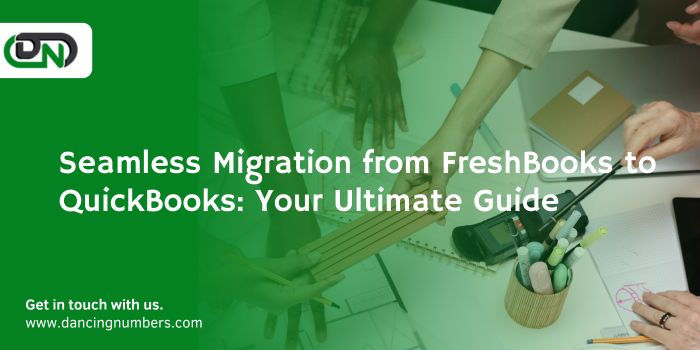Seamless Migration from FreshBooks to QuickBooks: Your Ultimate Guide
- dancingnumbersj
- Apr 3, 2024
- 3 min read
For small businesses and independent professionals, the choice of accounting and financial management software is crucial for sustaining growth and ensuring operational efficiency. Convert FreshBooks to QuickBooks dominate this space, each offering distinct advantages. FreshBooks is acclaimed for its straightforward interface, excelling in invoicing and time tracking, while QuickBooks is known for its comprehensive suite of accounting features and its scalability. There are moments, however, when a shift from FreshBooks to QuickBooks becomes essential, driven by the need for more complex accounting capabilities, scalability considerations, or a change in business direction. This guide aims to streamline the transition from FreshBooks to QuickBooks, facilitating a frictionless move for your business.

Why Make the Move?
Understanding the impetus behind the switch is the first step:
1. Enhanced Scalability: QuickBooks delivers advanced features that cater to the growing needs of your business.
2. Deeper Accounting Functions: Businesses in need of sophisticated financial reports, inventory management, and tax planning find a more robust solution in QuickBooks.
3. Wider Integration Options: QuickBooks supports a larger ecosystem of third-party integrations, offering greater flexibility in managing business operations.
Setting the Stage for Migration
1. Secure a Data Backup: Create a comprehensive backup of your FreshBooks data as a safeguard against potential loss during the migration process.
2. Cleanse Your Data: Audit your FreshBooks information for precision, removing any superfluous data to ease the migration process.
3. Get to Know QuickBooks: Familiarize yourself with QuickBooks’ features and organizational structure to ensure a smoother adaptation and utilization once the migration is complete.
4. Seek Expert Advice: For those with intricate financial records, consulting with an accountant or a QuickBooks certified professional can provide clarity and streamline the migration journey.
Migrating Steps
Transitioning involves several critical steps, from data exportation from FreshBooks, preparation for QuickBooks, to ensuring accurate implementation within the new platform.
1. Data Export from FreshBooks:
· Navigate to the export section within your FreshBooks account.
· Select the data segments you wish to migrate (e.g., invoices, clients, expenses).
· Ensure the export is in a format that QuickBooks can process, typically CSV or Excel.
2. Data Preparation for QuickBooks:
· Modify the exported files to align with QuickBooks’ import prerequisites, potentially adjusting column names or data formats.
· Standardize naming conventions for consistency with QuickBooks requirements.
3. QuickBooks Importation:
· Within QuickBooks, initiate the data import via the file menu or specific sections like customers or vendors.
· Adhere to the guided prompts to correctly upload and assign your data within QuickBooks.
4. Verification and Adjustment:
· Conduct a thorough review of the imported data in QuickBooks, ensuring all information is correctly reflected.
· Cross-check client details, transactions, and balances for accuracy.
5. Configure Integrations and Preferences:
· Set up any necessary integrations with QuickBooks to enhance business operations.
· Customize QuickBooks settings to fit your business’s operational workflow and preferences.
Post-Migration Strategy
6. Educate Your Team: Allocate resources for training your staff on QuickBooks, utilizing the plethora of learning materials available online for mastery of the platform.
7. Maintain Data Integrity: Develop a regimen for regularly updating and managing your QuickBooks data, ensuring its accuracy and reliability moving forward.
Conclusion
Switching from FreshBooks to QuickBooks represents a strategic enhancement in your business’s accounting capabilities and potential for growth. Through meticulous preparation, careful execution of the migration, and diligent data integrity post-migration, you lay the foundation for a solid financial system designed to support your business’s ambitions. This migration is more than a simple data transfer—it's about establishing a comprehensive financial framework that will drive your business's success into the future.






Comments